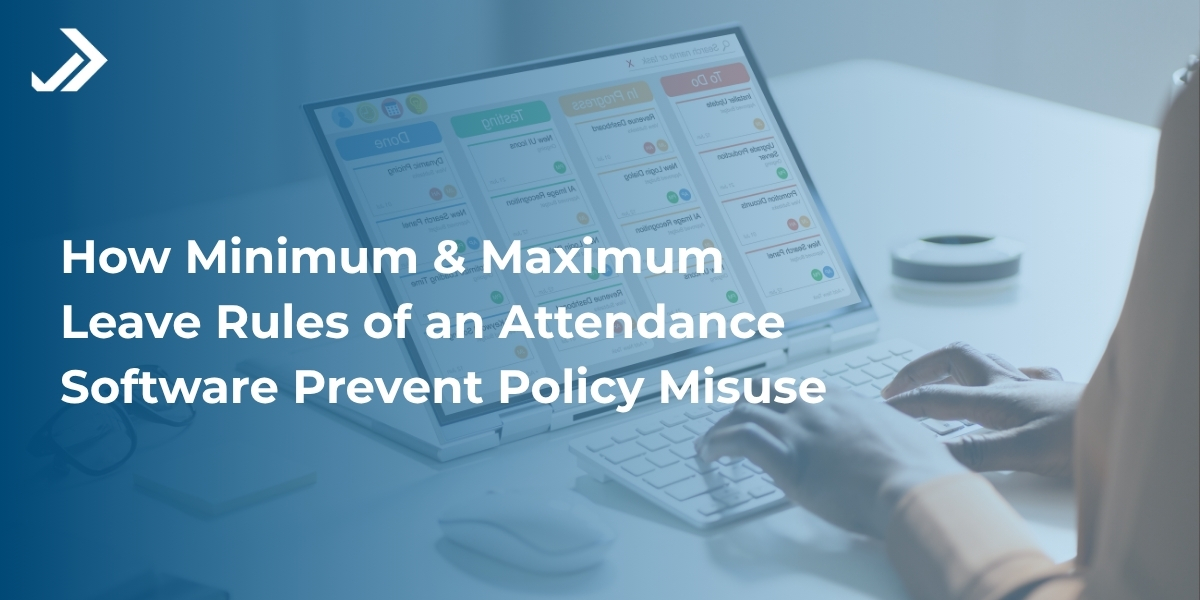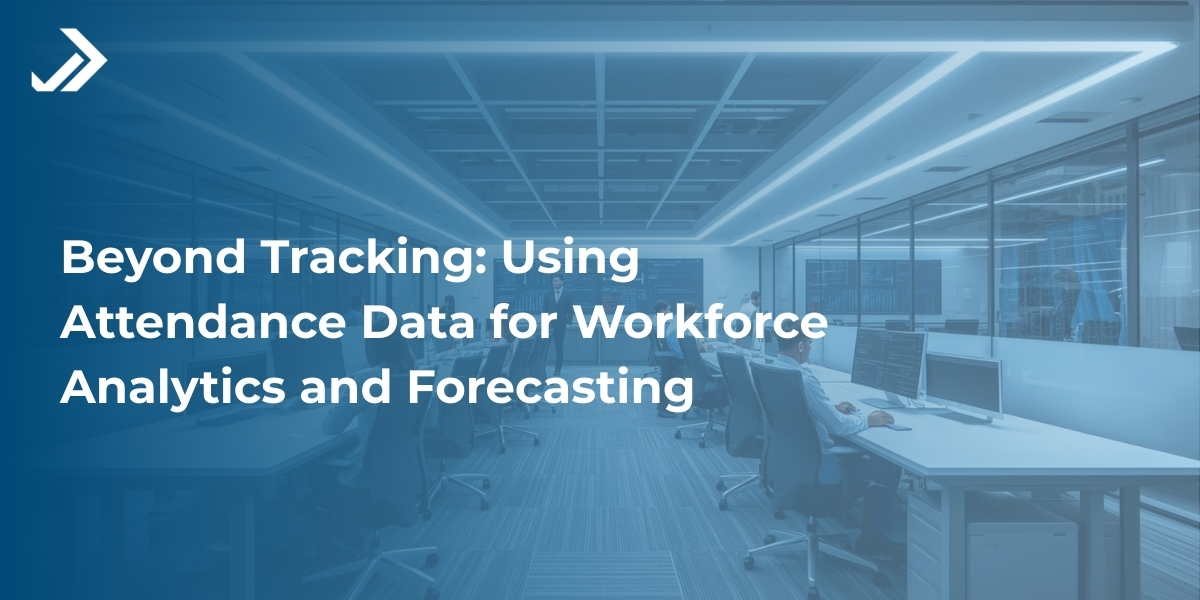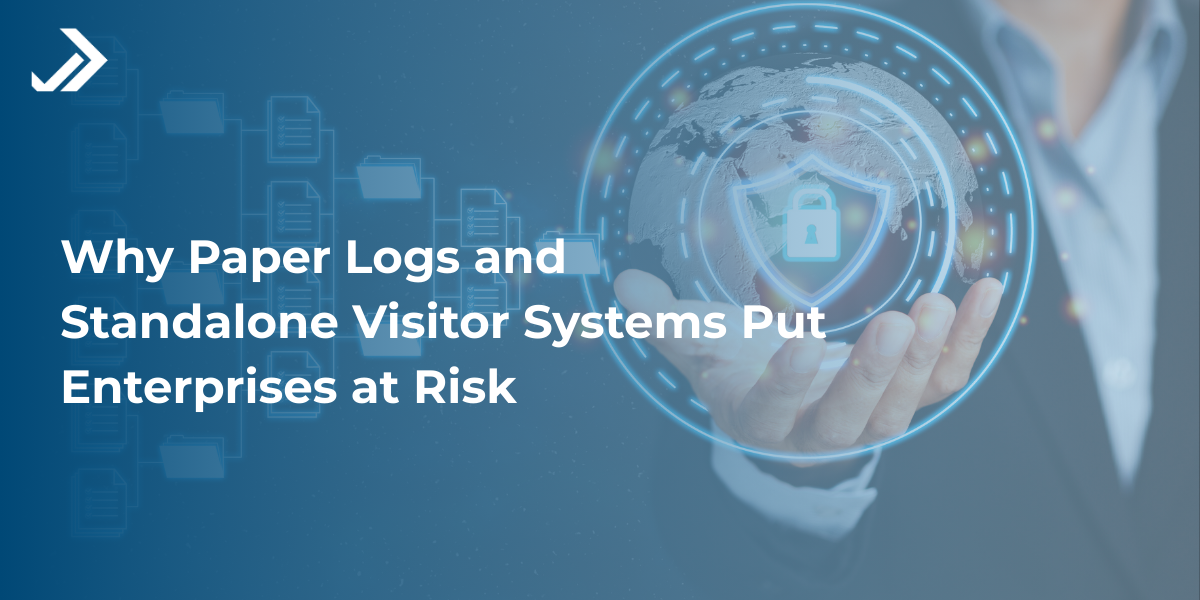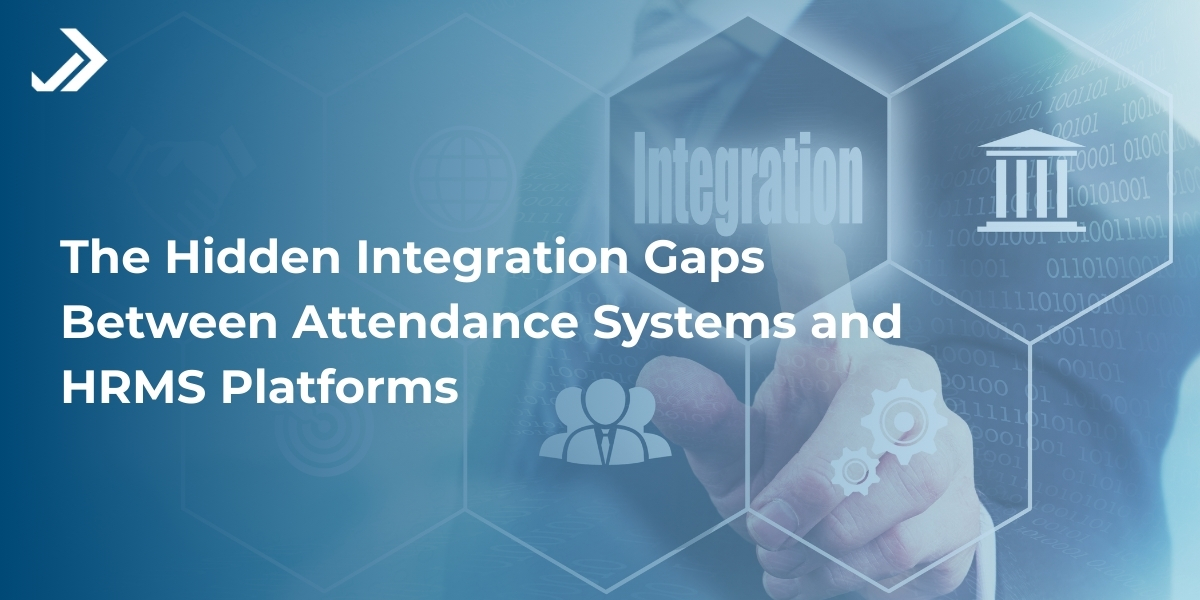

Author : Marketing Team | Follow us on LinkedIn:
23 Oct, 2025
How Minimum & Maximum Leave Rules of an Attendance Software Prevent Policy Misuse
Table of Contents
Think about a project that’s weeks away from delivery. Suddenly, a key team member applies for two straight weeks of leave. The manager is left scrambling to redistribute tasks, deadlines get shaky, and stress spreads across the team. On the flip side, another employee keeps dropping in tiny requests for half-day breaks that add up to a bigger disruption than anyone realizes. Neither situation happens because people are trying to harm the business—it happens because leave policies aren’t enforced automatically. That’s where a modern attendance management system steps in with minimum and maximum leave rules. These smart boundaries close the gaps without killing flexibility.
The Problem with Unregulated Leave Requests
Leave management seems simple until it starts creating operational headaches. Employees may apply for excessively long leaves that leave teams short-staffed, or they might flood HR with fragmented requests that don’t add real value. When approvals rely on manual oversight, inconsistencies creep in. Some managers are strict, while others are lenient. The outcome is bias, friction, and scheduling chaos. A biometric attendance management system or rule-based attendance software addresses these challenges by embedding enforcement into the process itself.
What Are Minimum and Maximum Leave Rules?
Minimum and maximum leave rules are designed to keep leave applications practical and fair.
- Minimum Leave Rule: Prevents trivial or unproductive requests, like applying for a quarter of a day when the minimum required is half.
- Maximum Leave Rule: Limits long leave applications, preventing users from booking an entire month off at once.
Together, these rules help HR teams strike a balance between granting flexibility and protecting productivity. In a digital HR ecosystem, especially when paired with a biometric attendance management system, they’re not just policy tweaks—they’re structural safeguards.
How Attendance Software Enforces These Rules
An attendance management system automates enforcement so managers and HR don’t have to manually monitor every application.
- Checks at Submission: The system validates leave duration before the request is submitted. For example, if an employee tries to apply for 20 days of earned leave, the system restricts it to the set maximum—say 10 days—forcing the employee to adjust before HR even gets involved.
- Custom Rules per Leave Type: Casual leave, earned leave, or sick leave can all have different limits. A request for 0.25-day casual leave, for instance, would be blocked if the minimum threshold is one day or half day.
- Alerts and Rejections: Applications outside the rules trigger instant alerts or rejections, reducing back-and-forth with HR.
- Exception Workflows: Special cases can be routed through an additional approval process.
By stopping misuse at the source, the biometric attendance management system ensures consistency, speeds up approvals, and reduces unnecessary escalations.
Business Benefits of Enforcing Leave Duration Rules
Organizations that enforce minimum and maximum leave rules through an attendance management system see tangible benefits:
- Prevents Policy Misuse: Employees can’t exploit loopholes in generous leave structures, such as stacking long blocks of leave right before deadlines.
- Improves Workforce Planning: With rules in place, managers can schedule backups in advance. For example, if a biometric attendance management system blocks a 20-day request, the manager can immediately plan for a shorter, more manageable absence.
- Reduces HR Escalations: When rules auto-adjust requests, employees revise them immediately instead of escalating disputes.
- Ensures Fairness and Consistency: Every employee faces the same rules, regardless of department or manager.
- Boosts Accountability: Employees become more thoughtful when applying, as frivolous or impulsive requests are automatically blocked.
The net effect is smoother operations, fewer disputes, and a stronger sense of fairness across the workplace.
Best Practices for Setting Leave Limits in Your Organization
To get the most out of these rules, organizations should tailor them thoughtfully within their attendance management system.
- Analyze Past Leave Patterns: Look for frequent misuses or gaps.
- Define Limits per Leave Type: Customize based on leave categories.
- Communicate Clearly: Share the rationale so employees understand the logic, not just the rules.
- Review Regularly: Adjust based on seasonality, workforce size, or organizational changes.
When aligned with organizational needs, these limits work as enablers, not restrictions. A well-configured biometric attendance management system can make policy enforcement seamless while still giving employees the freedom they need.
Conclusion
Unregulated leave requests can quickly turn into operational roadblocks. By embedding minimum and maximum leave rules into an attendance management system, organizations ensure fairness, reduce misuse, and make scheduling predictable. And when powered by a biometric attendance management system, these policies become even more accurate and tamper-proof.
Workplaces that adopt them end up with fewer disruptions, smoother HR processes, and a culture of accountability. In the end, it isn’t just about managing leave—it’s about building smarter, more dependable workplaces.








